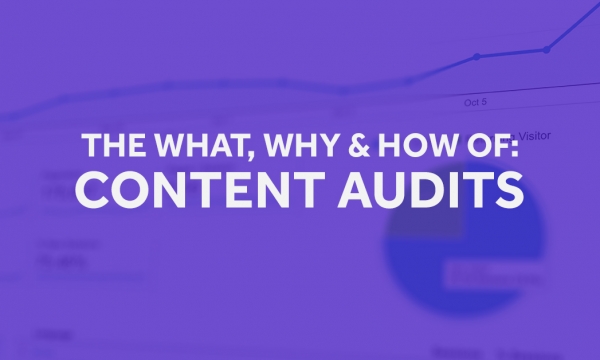High-ranking content isn’t always the highest quality content. However, browsing the top search engine results pages (SERPs) for anything from recipes for your favourite dish to a how-to guide for cleaning the patio will reveal a few things about the way such content is created and curated.
At its heart, the best content is engaging and useful for its readers. But unless you take the time to consider your audience, the user experience and the relevance of your content, readers will struggle to discover it in the first place.
You’ll need to apply some of these stylistic, technical and editorial touches to get your high-quality content seen, shared and admired by a larger audience.
1: Strong on E.A.T.

Google’s Medic Update from August 2018 – so called because of its focus on the health vertical rather than causing websites to flatline – gave rise to the necessity of EAT.
Although initially aimed at YMYL (Your Money or Your Life) products and services, there are nonetheless numerous opportunities for marketers in any sector to send the right kind of signals to Google that you’re serious about fostering trust with your audience.
Expertise is about who created the content, and what gives them the right to voice their opinion on the subject matter. Readers feel more comfortable getting medical advice from a healthcare professional, or a view on mortgages from an established financial advisor.
Authoritativeness represents your brand’s reputation, as well as its credentials within your industry. Gaining recognition and prestige from fellow content publishers in the same field boosts your authority and is sure to also boost rankings.
Trustworthiness is about transparency as a business, as well as maintaining your content to provide consistently up to date and accurate information. Standing by your content with cited sources, clearly established authorship and contact information is the clearest way to present your brand as worthy of a reader’s trust.
Creating content that meets each of the E-A-T requirements isn’t just a way to satisfy Google’s search impulses. It’s also a template for how you should be presenting your brand to consumers.
2. High relevance

You’ll usually find branded content at its most irrelevant on social media. Often this is when you spot a company trying to ‘join in’ with whatever event or meme is trending – even when their connection is tenuous at best.
But regularly publishing owned content beyond your sphere of influence – no matter how well-intended – could have negative consequences for your brand visibility on Google.
Even if your core product or service offering is decidedly niche, you need to ensure that your content covers all the bases for users. Whether it’s a regular customer or someone starting their journey at the top of the sales funnel, each piece of content should be relatable to readers, and relevant to the service or product you provide.
Google’s SERPs give you the chance to cover topics from every angle. Featured snippets and People Also Asked sections are useful ways to consider what your target audience wants to know about your products, industry, and even your brand. Tools such as AnswerThePublic also surface popular queries about your topic of interest – questions that you can then look to answer.
These answers aren’t restricted to the written word, either. DIY novices are now just as likely to look to YouTube for visual how-to guides when it comes to mastering tricky skills. You’ll find academic deep-dives into densely discussed areas happening on podcasts and ‘long reads’ which have been generously stitched through with visual aids.
As well as staying relevant to the reader, these enhanced pieces of content can also boost time on site – another important signal to Google that what you’re providing is sufficiently on-topic to deserve top spot.
Once you’ve provided all this relevant information to interested users, you can look to take a further step out of your wheelhouse. Consider other ways to get the word out about our brand, for example through influencer content and outreaching to the media to hook outliers.
3: Clarity on user intent

Relevance ties in strongly with knowing what your readers want. Even as far back as 2006, researchers were interested in the many possible interpretations of a single broad search term. Those interpretations boil down to this – when you Google the word ‘pizza’ alone, any or all of the following might apply as reasons for your search:
- You want one delivering to your door.
- You want to find a recipe.
- You want to know the history of the dish.
- You’re a fan of the Teenage Mutant Ninja Turtles.
Any website that finds itself at the other end of your takeaway-based trawl via Google will have structured its informational output to suit. Use keyword research to build out your content based on whether a visitor wants to cook a pizza themselves or have one delivered.
The more clearly you can define and describe your site’s particular interactions with pizza, the more Google will be confident to tell a user that you are the place to go for it.
4: Completeness and depth
User intent should also inform the depth of your content. If you can fashion a singular user intent from your keyword research and marketing persona, then that’s the only one you need to service within the main content of a single page.
Google’s SERPs also show more than chunks of text – displaying simple tables, videos and product page shortcuts just as frequently. This allows you to present more in-depth information in a number of eye-catching ways. However you choose to present your answers to users’ burning questions, Google is getting better at determining their relevance to the corresponding queries. Work on formatting your flow of information to net as much of the interest as you can.
Signpost the areas on your site that can satisfy queries related to the initial one, using internal links throughout your content and as CTAs where you focus more on informing than selling.
5: Strong user experience
The extent to which providing users with a frictionless, accessible user experience translates into better rankings has always been up for debate. But with the Core Web Vitals update set to hit in May 2021, there’s little doubt that Google is now focused on rewarding the sites that deliver great UX.
Webmasters are aware of the power of page performance signals. They rolled out and souped up their sites to remove intrusive interstitials, provide safe surfing experiences and make them more mobile-friendly.
But the next wave of updates will target technicals like:
- Faster loading times
- Interactivity
- Visual stability
Together with the usual UX boosters, Google is signalling its intent to use this approach as a tiebreaker for otherwise highly competitive content.
Where one or more websites easily satisfy the requirements for a top-five SERP based on their content, the idea is to use these extra factors to reward sites that do more for their users in terms of experience and accessibility.
Webmasters should do their bit to improve in the areas where Google intends to fine-tune its algorithms and reward (or punish) sites as it deems fit. Still, there’s nothing to stop ongoing checks on your content’s key factors of quality to ensure a continued positive experience for your users.
No single one of the above considerations will send your rankings through the roof overnight. But taking another look at how your content represents your brand in an effort to satisfy users’ interest and engagement might show you a thing or two.




